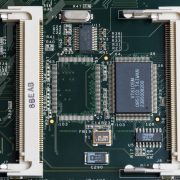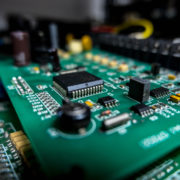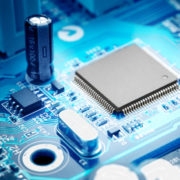Mixed-Signal ASIC Design Basics: Bridging the Gap Between Analog and Digital Systems
Modern electronic systems seamlessly integrate analog and digital circuits to perform complex tasks efficiently. Mixed-signal ASIC Design bridges these domains’ gaps, enabling high-performance and power-efficient solutions across various industries. Understanding the fundamentals can help businesses optimize their electronic systems for improved functionality and reliability.
Understanding Mixed-Signal ASIC Design
1. What is Mixed-Signal ASIC Design?
This refers to developing application-specific integrated circuits (ASICs) that incorporate analog and digital components. The custom chips are tailored to meet specific application requirements and offer advantages such as reduced power consumption, enhanced performance, and compact form factors. These ASICs enable seamless communication between analog and digital systems by integrating analog-to-digital converters (ADCs), digital-to-analog converters (DACs), and other mixed-signal components.
2. Key Benefits of Mixed-Signal ASIC Design
- Improved Performance: This design enhances the overall efficiency of electronic systems by optimizing the signal path and reducing latency.
- Lower Power Consumption: Custom-designed ASICs consume less power than off-the-shelf solutions, making them ideal for battery-powered devices.
- Reduced System Complexity: Integrating multiple functions into a single chip simplifies circuit design and minimizes the need for external components.
- Enhanced Reliability: Custom ASICs are designed for specific applications, reducing potential failures and improving long-term stability.
Applications of Mixed-Signal ASIC Design
1. Consumer Electronics
Smartphones, tablets, and wearable devices rely on this design to enable efficient signal processing, sensor integration, and wireless communication. These ASICs help enhance audio quality, touch sensitivity, and battery efficiency in modern consumer electronics.
2. Automotive and Industrial Systems
Automotive applications, such as advanced driver-assistance systems (ADAS) and electric vehicle power management, leverage this design for real-time sensor data processing and efficient power distribution. Industrial automation systems also benefit from these ASICs by enabling precise control of motor drives, power monitoring, and communication interfaces.
3. Healthcare and Medical Devices
Medical devices, including portable diagnostic tools and wearable health monitors, utilize this design for accurate signal acquisition and real-time data analysis. These custom chips play a critical role in ensuring the reliability and precision of medical electronics.
Conclusion
Mixed-Signal ASIC Design is essential for developing advanced electronic systems that require seamless analog-to-digital integration. Combining the best of both worlds, these ASICs offer high-performance, energy-efficient, and reliable solutions tailored to specific applications. As technology evolves, it will remain at the forefront of innovation, driving the next generation of smart and connected devices.
Learn more about Linear MicroSystems by clicking here!
Linear MicroSystems, Inc. is proud to offer its services worldwide as well as the surrounding areas and cities around our Headquarters in Irvine, CA: Mission Viejo, Laguna Niguel, Huntington Beach, Santa Ana, Fountain Valley, Anaheim, Orange County, Fullerton, and Los Angeles.











